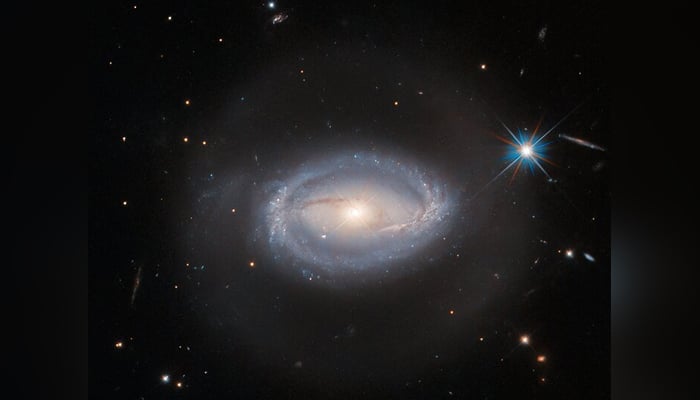Hubble Telescope captures mysterious space object similar to galaxy
Bright material is not the black hole but the material from the galaxy which is brightening it up
March 31, 2023

Space is a very difficult realm to study which can be corroborated by a new image released by the Hubble Space Telescope showing a spiralling galaxy-like celestial object with a bright core, named Z 229-15, reported space.com citing European Space Agency (ESA).
An initial glance shows the object as a galaxy but, according to the scientists, fits different classifications which is difficult to name.
In an official statement released by ESA, it stated: "Z 229-15 is one of those interesting celestial objects that, should you choose to research it, you will find defined as several different things."
As there are no single and definite descriptions which could classify the newly discovered celestial object, however, several explanations describe what this amazing object could be.
First of all, Z 229-15 fits the definition of a galaxy — a gravitationally bound collection of stars with a large amount of gas and dust.
According to the ESA explanation, it contains an AGN or is an active AGN — an exceptionally bright core of a galaxy due to the presence of a supermassive black hole.
The bright material is not the black hole but the material from the galaxy which is brightening it up making a disc-like shape which is being pulled with the force of gravitation into the centre of the black hole, the statement said.
When the circulating disc heats up, it releases an enormous amount of energy which causes brightness, according to the explanation.
The statement explaining the phenomena also added that quasars are particular types of AGN.
For being quasars, they need to be at a considerable distance from the earth and with extreme brightness.
As the image shows, it is very luminous in the centre surrounding the stars at a distance of 390 million light years away from earth.
The explanation also stated: Often an AGN is so bright that the rest of the galaxy cannot be seen, but Seyfert galaxies are active galaxies that host very bright AGNs (quasars) while the rest of the galaxy is still observable.
"So Z 229-15 is a Seyfert galaxy that contains a quasar, and that, by definition, hosts an AGN. Classification in astronomy can be a challenge, underlined the statement.











